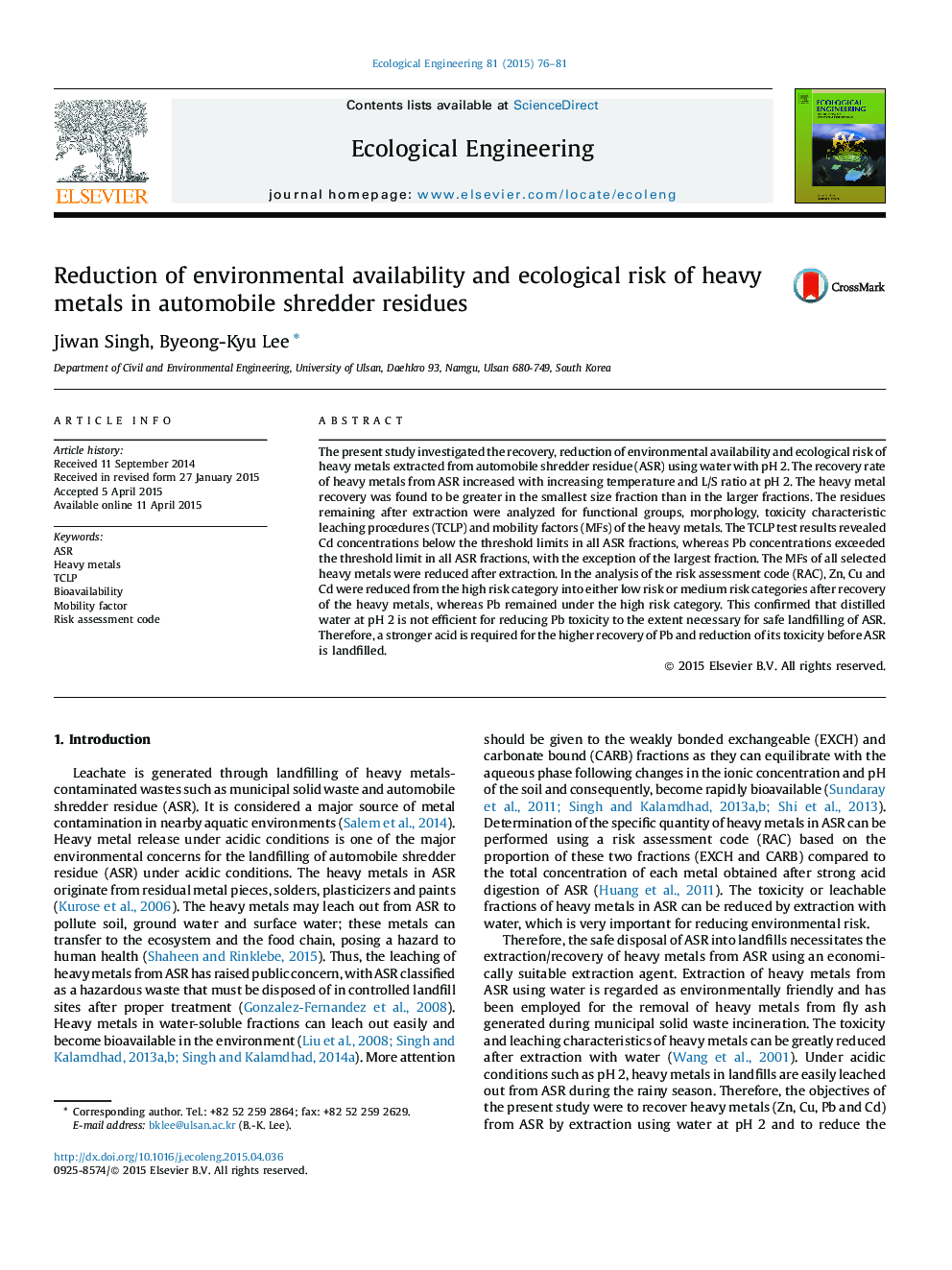| Article ID | Journal | Published Year | Pages | File Type |
|---|---|---|---|---|
| 4389058 | Ecological Engineering | 2015 | 6 Pages |
•ASR is a hazardous material due to presence of bioavailable fractions of metals.•The highest recovery of heavy metals was found at pH 2 of water.•The highest recovery of heavy metals was found in the smallest size of ASR.•Bioavailability and risk of Zn, Cu and Cd in ASR were reduced greatly.
The present study investigated the recovery, reduction of environmental availability and ecological risk of heavy metals extracted from automobile shredder residue (ASR) using water with pH 2. The recovery rate of heavy metals from ASR increased with increasing temperature and L/S ratio at pH 2. The heavy metal recovery was found to be greater in the smallest size fraction than in the larger fractions. The residues remaining after extraction were analyzed for functional groups, morphology, toxicity characteristic leaching procedures (TCLP) and mobility factors (MFs) of the heavy metals. The TCLP test results revealed Cd concentrations below the threshold limits in all ASR fractions, whereas Pb concentrations exceeded the threshold limit in all ASR fractions, with the exception of the largest fraction. The MFs of all selected heavy metals were reduced after extraction. In the analysis of the risk assessment code (RAC), Zn, Cu and Cd were reduced from the high risk category into either low risk or medium risk categories after recovery of the heavy metals, whereas Pb remained under the high risk category. This confirmed that distilled water at pH 2 is not efficient for reducing Pb toxicity to the extent necessary for safe landfilling of ASR. Therefore, a stronger acid is required for the higher recovery of Pb and reduction of its toxicity before ASR is landfilled.
